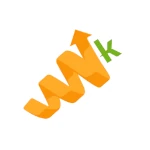Web3 Loyalty Tokens Drive 28% Higher Customer Engagement
Starbucks generated over $200,000 in secondary market sales from digital collectible stamps before most marketers even understood what Web3 loyalty tokens were. While traditional loyalty programs trap customers in closed ecosystems with points that expire and can’t be transferred, blockchain-based tokens are rewriting the rules of customer engagement entirely.
Recent data shows that 43% of customers participated in Web3 loyalty programs for exclusive perks, indicating a massive market appetite for tokenized rewards. More compelling still, brands implementing NFT-based loyalty initiatives are seeing a 28% boost in repeat customer interactions compared to traditional point systems.
Key Takeaways
- Web3 loyalty tokens provide true customer ownership, unlike traditional points that remain trapped in company databases and can expire or disappear if businesses close.
- Brands see measurable performance improvements with 28% higher repeat customer interactions and 12% lower acquisition costs compared to traditional loyalty programs.
- Start with hybrid systems that offer both traditional points and tokens to reduce friction while gradually introducing customers to Web3 features at their comfort level.
- Focus on immediate utility over speculation by creating tangible benefits like exclusive access, cross-platform compatibility, and tradeable rewards rather than emphasizing technical blockchain details.
- Success requires a community-building approach where Web3 loyalty tokens become tools for genuine customer relationships and governance participation, not just digitized point systems.
TABLE OF CONTENTS:
What Are Web3 Loyalty Tokens?
Instead of centralized points controlled by a single company, these tokens exist on blockchain networks, giving customers actual ownership of their rewards. Think of them as digital assets that customers can hold, trade, or use across multiple platforms, not just locked within one brand’s ecosystem.
These tokens come in two primary forms: fungible tokens (similar to cryptocurrency) and non-fungible tokens (NFTs) that represent unique digital assets. Unlike traditional loyalty points, which reside in company databases and can be lost if a business closes, Web3 loyalty tokens are permanently recorded on blockchain networks, ensuring customers genuinely own them.

Why Web3 Tokens Outperform Traditional Points
Traditional reward systems are limited to a single company or platform. However, web3 loyalty tokens are universal and open the doors for cross-sector partnerships.
The superiority of Web3 loyalty tokens stems from three core advantages that traditional points simply cannot match:
- True ownership: Customers control their tokens in personal wallets, not company databases.
- Universally accepted: Tokens can be used across different platforms and ecosystems.
- Transparency: All transactions are recorded on public blockchains for complete visibility.
- Tradability: Tokens can be bought, sold, or gifted to other users.
- Programmability: Smart contracts can automate complex reward mechanics.
The impact is measurable. Brands deploying tokenized loyalty initiatives have experienced a 12% reduction in customer acquisition costs, primarily because token-based programs create viral growth through trading and sharing mechanisms that traditional points lack.
| Feature | Traditional Points | Web3 Loyalty Tokens |
|---|---|---|
| Ownership | Company-controlled database | Customer-owned wallet |
| Transferability | Non-transferable | Fully transferable |
| Expiration | Often expires | Permanent ownership |
| Transparency | Limited visibility | Full blockchain transparency |
| Interoperability | Single brand ecosystem | Cross-platform compatibility |
Real-World Success Stories
The most compelling evidence for Web3 loyalty tokens comes from brands already implementing them successfully. Starbucks launched the Odyssey program with digital collectible stamps (NFTs) that customers earn by completing brand-centric “journeys” through the Starbucks app. The results were remarkable: the app experienced a 15% year-over-year increase in engagement and generated over $200,000 in secondary market sales during the beta phase.
“Integrating NFTs as collectible rewards can significantly increase user engagement and unlock new revenue streams via secondary markets. The key is creating genuine utility beyond just collectibility.” – Web3 Marketing Analysis
In the airline industry, Emirates Airlines tokenized multi-partner loyalty vouchers on blockchain via the Loyyal platform to automate validation and redemption across corporate partners. This enabled the rapid onboarding of new partners and precise, real-time tracking of loyalty transactions across all stakeholders — something previously impossible with traditional systems.
E-commerce platforms are also seeing success. StormX has built a browser extension that awards native tokens on every purchase and runs a referral program, offering a 10% lifetime discount to both the referrer and the new user. This approach accelerated new-user acquisition and improved retention by rewarding both shopping activity and peer referrals.
Implementation Strategies That Work
Tokens should provide tangible benefits from the very start, but successfully launching Web3 loyalty tokens requires careful planning around both technical infrastructure and user experience. The most effective implementations follow a phased approach that gradually introduces blockchain elements without overwhelming existing customers.
Start with hybrid systems that offer both traditional points and tokens, allowing customers to opt into Web3 features at their comfort level. This reduces friction while building familiarity with wallet connections and token management.

Technical considerations include selecting the appropriate blockchain network (Ethereum for maximum compatibility, Polygon for lower fees), designing token economics that encourage holding rather than immediate selling, and integrating with existing CRM systems.
Consider partnering with established Web3 marketing agencies that understand both blockchain technology and customer psychology. Specialized crypto marketing expertise can help navigate the technical complexities while maintaining focus on business outcomes.
Overcoming Common Challenges
The biggest barrier to Web3 loyalty token adoption isn’t a technical issue — it’s your audience. Many customers still associate blockchain with speculation rather than its practical applications. Successful programs address this by emphasizing practical benefits, such as true ownership and cross-platform compatibility, rather than technical details.
Wallet onboarding remains another friction point. The most effective solutions either integrate wallet creation into existing apps (like Starbucks did) or partner with simplified wallet providers that handle complex blockchain interactions behind the scenes. Customer retention strategies that worked during challenging periods can inform approaches to Web3 adoption challenges.
Regulatory compliance varies by jurisdiction, but focusing on utility tokens rather than investment vehicles typically reduces regulatory complexity. Ensure tokens provide clear functional benefits within your ecosystem rather than promising financial returns.
The Future of Tokenized Loyalty
Web3 loyalty tokens are evolving beyond simple reward mechanisms toward comprehensive community-building tools. Forward-thinking brands are experimenting with governance tokens that give customers voting rights on product development, seasonal campaigns, and brand partnerships.
Integration with AI and machine learning is creating personalized token experiences that adapt to individual customer behavior. Instead of one-size-fits-all point structures, smart contracts can automatically adjust reward rates based on engagement patterns, purchase history, and community participation.
The convergence of Web3 loyalty tokens with emerging technologies, such as augmented reality and IoT devices, will create even more engaging experiences. Imagine earning tokens for visiting physical locations, participating in AR brand experiences, or connecting smart home devices to loyalty programs.
Making Web3 Loyalty Work for Your Brand
As traditional loyalty programs struggle with declining engagement and increasing costs, blockchain-based alternatives offer measurable improvements in retention, acquisition, and community building. The transition to Web3 loyalty tokens isn’t just about adopting new technology; it’s about reimagining customer relationships and fostering deeper connections.
Can tokens unlock exclusive content, early access to products, or special experiences? The most successful Web3 loyalty programs create benefits that can’t be replicated in traditional systems. Start by identifying what unique value your brand can provide through token ownership.
Brands that succeed treat tokens as tools for building genuine communities rather than simply digitizing existing point systems. The brands implementing these systems today aren’t just improving their loyalty programs; they’re positioning themselves at the forefront of the next evolution in customer engagement.
Ready to explore how Web3 loyalty tokens could transform your customer retention strategy? Collaborate with the leading blockchain marketing agency to create a tokenized loyalty program that delivers tangible business outcomes while improving customer relationships.
Ready to turn those loyalty program struggles into your competitive advantage?
Frequently Asked Questions
-
What's the main difference between Web3 loyalty tokens and traditional reward points?
Web3 loyalty tokens are stored on blockchain networks and owned by customers in their personal wallets, while traditional points are controlled by companies in centralized databases. This means that tokens can be traded, transferred, and used across multiple platforms, and they will not disappear if a business closes.
-
How much can brands expect to improve customer engagement with Web3 loyalty programs?
Brands implementing Web3 loyalty tokens see measurable performance improvements, including 28% higher repeat customer interactions and 12% lower acquisition costs compared to traditional loyalty programs. Some brands, such as Starbucks, have also experienced a 15% year-over-year increase in app engagement.
-
What's the best way to introduce Web3 loyalty tokens without overwhelming existing customers?
Start with hybrid systems that offer both traditional points and tokens, allowing customers to opt into Web3 features at their comfort level. Focus on creating immediate utility and tangible benefits rather than emphasizing technical blockchain details.
-
Which blockchain network should I choose for my loyalty token program?
Ethereum offers maximum compatibility with existing Web3 infrastructure, while Polygon provides lower transaction fees. The choice depends on your budget and technical requirements; however, both networks support the smart contract functionality required for loyalty programs.
-
How do I address customer concerns about blockchain technology being too speculative?
Emphasize practical benefits, such as true ownership, cross-platform compatibility, and permanent rewards, rather than technical details. Focus on utility tokens that provide clear functional benefits within your ecosystem rather than promising financial returns.
-
What are the biggest technical challenges when implementing Web3 loyalty tokens?
Wallet onboarding remains the primary friction point, as many customers aren’t familiar with blockchain wallets. The most effective solutions integrate wallet creation into existing apps or partner with simplified wallet providers that handle complex blockchain interactions behind the scenes.
-
Can Web3 loyalty tokens be integrated with existing CRM and marketing automation systems?
Yes, Web3 loyalty tokens can be integrated with existing CRM systems to maintain continuity of customer data. The key is designing token economics and smart contracts that work in tandem with your current marketing stack, while providing the additional benefits of blockchain technology.




